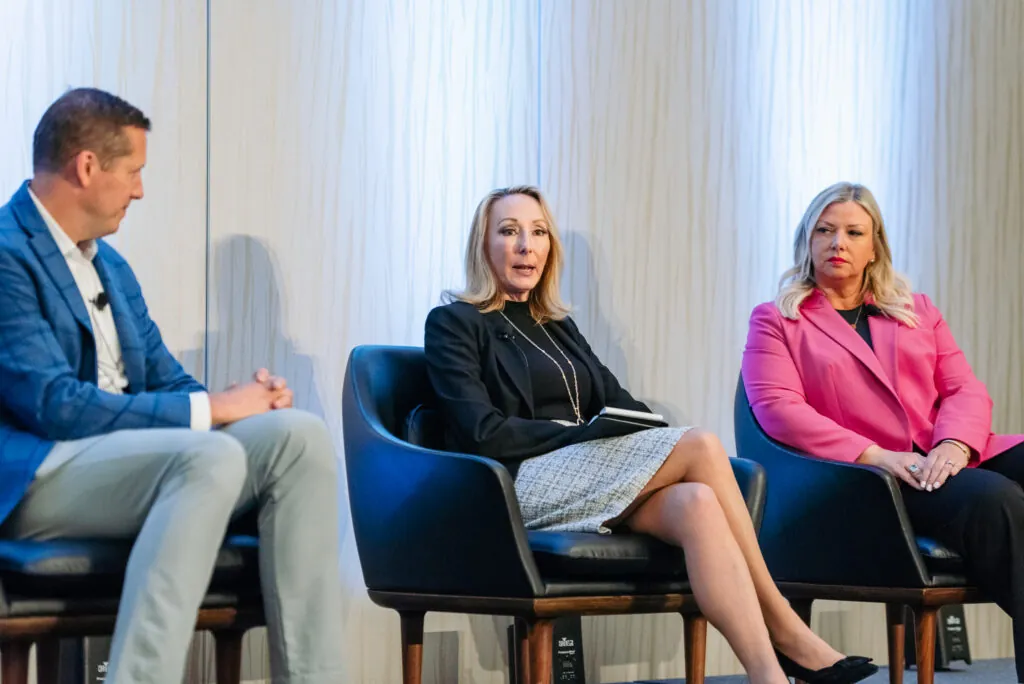Leaders at companies like Help at Home, HCR Home Care and Home Helpers are making major changes at their organizations with an eye towards the future.
At Home Helpers, the biggest change that has taken place over the past year has to do with data and informatics. The company is using the information gleaned from this data to make decisions at a macro and micro level.
“We’ve really made investment in data and informatics, to support our franchisees – so that they can be more efficient, more profitable, more effective – and to support the families that we serve, and the caregivers that we serve in their ability to have information, to make good decisions, as they’re delivering exceptional care,” Home Helpers President and CEO Emma Dickison said during a panel discussion at Home Health Care News’ FUTURE conference last week.
Dickison noted that information that resulted from this data was especially helpful across a large franchise brand like Home Helpers.
Cincinnati-based Home Helpers is a home care franchise that provides personal care, nutrition and companionship care, among other services. The company has 348 franchise locations, and serves about 1,500 communities across 39 states.
On its end, HCR Home Care has focused on improving retention at the company, and has made specific changes in order to accomplish this.
“Post-covid, our focus has been on the employee, and on how we keep these caregivers employed and supported,” HCR Home Care President Suzanne Turchetti said during the discussion. “We’ve invested in a lot of technology. We have a rewards program we use for our caregivers, and that’s showing early indications of higher retention, and we’re really making sure that we’re supporting our caregivers, not only with professional growth, but also the personal challenges that prevent them from coming to work.”
Founded in 1978, HCR Home Care is a provider of home care and home health services across New York state.
Some of the personal challenges HCR Home Care is helping employees address include food insecurity, or even housing issues, according to Turchetti.
The company has received an ARPA grant from the federal government to support these efforts.
“Our employees, I always say, are the heart of our organization, and if we don’t take care of that heart, then we don’t have anyone to take care of those patients,” she said.
Employee retention is especially at HCR Home Care because the company experienced a rough patch in the business during the COVID-era. During this period, the company had an extremely high turnover rate.
Since then, HCR Home Care has started to turn things around.
“One of the things that we started during the later years of Covid, probably late 2022, is what we call our ‘grow our own’ model,” Turchetti said. “We have a home health aide training program that’s licensed by New York State. We bring in folks who are new to the health care world, and we train them and pay them for their training. We have seen a huge improvement in retention for the people that we bring through our training program versus the people who are already certified.”
Before this, HCR Home Care mostly focused on recruiting aides that already had industry experience. The company has seen its turnover rate transform from being in the low 70s to dropping down to 40%.
Similarly, Help at Home has also set its sights on improving conditions for caregivers.
“They’ve got the toughest job every day, they face that threshold,” Help at Home President Tim O’Rourke said during the discussion. “They have to take care of people in their home, and it’s our job to support them. We’ve invested a ton in technology and in resources to actually support caregivers.”
Based in Chicago, Help at Home has more than 180 branch locations across 12 states. It provides personal care services to more than 66,000 clients via more than 53,000 caregivers.

One key investment for Help at Home has been AI-enabled technology that recruits 24/7, a platform that enables the company to bolster its recruitment efforts.
Help at Home has also invested in data that allows the company to enable more successful caregiver, client matching.
The company has also implemented 24/7 support for caregivers.
“At any point, any time, the caregiver can reach out and actually get a human being to talk to them and help them when they need it,” O’Rourke said. “At the end of the day, we’ve actually invested in an entire care team to support the caregiver in what they do every day.”
Ultimately, Dickison believes that Home Helpers needed to revamp its hiring process. This meant being open to candidates who didn’t fit their typical hire criteria.
“We’ve had to look at how and who we hire completely differently, using tools and resources,” she said. “We learned through a study that was done about personas and psychographics that really align to various positions in the caregiving vertical. Leveraging that data, [we discovered that] we tended to hire the same type, the same type, the same type. We always wanted that full-time person that was going to be with you 40 hours a week, plus overtime. We really bypassed some really good candidates in those personas that weren’t going to be lifelong.”




